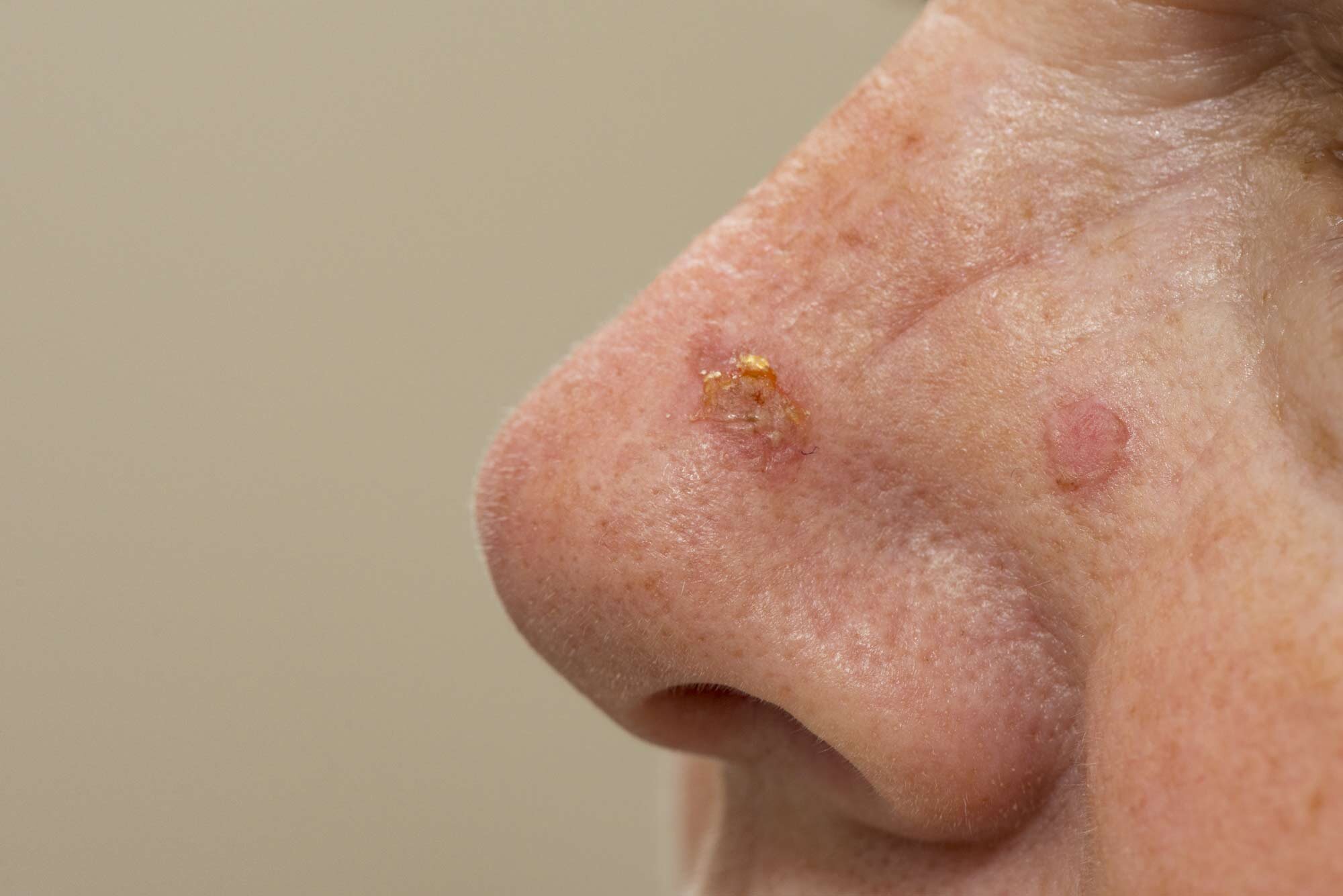
Squamous Cell Carcinoma

Cutaneous squamous cell carcinoma (SCC) is the second most common type of skin cancer. Approximately 1.8 million cases of SCC are diagnosed annually in the United States. SCCs can present as non-healing sores, pink bumps, wart-like growths, or rough pink patches. While most occur on the head and neck, SCC can occur anywhere on the body, including the lips, hands, feet, genitals, and anal area.
SCC is caused by DNA damage resulting in mutations in the skin’s epidermal cells. The main risk factor is exposure to ultraviolet light from the sun or tanning beds. Other contributing causes include immunosuppression, advanced age, fair skin, chronic skin infection or inflammation, skin precancers (actinic keratoses), male gender, and history of human papilloma virus (HPV).
While there are a variety of treatment options, Mohs surgery offers the highest cure rate. Other treatments include standard excision, local destruction, topical medications, systemic therapy and radiation. The preferred therapy depends on a variety of factors including tumor stage, location, patient comorbidities, and goals of care.


